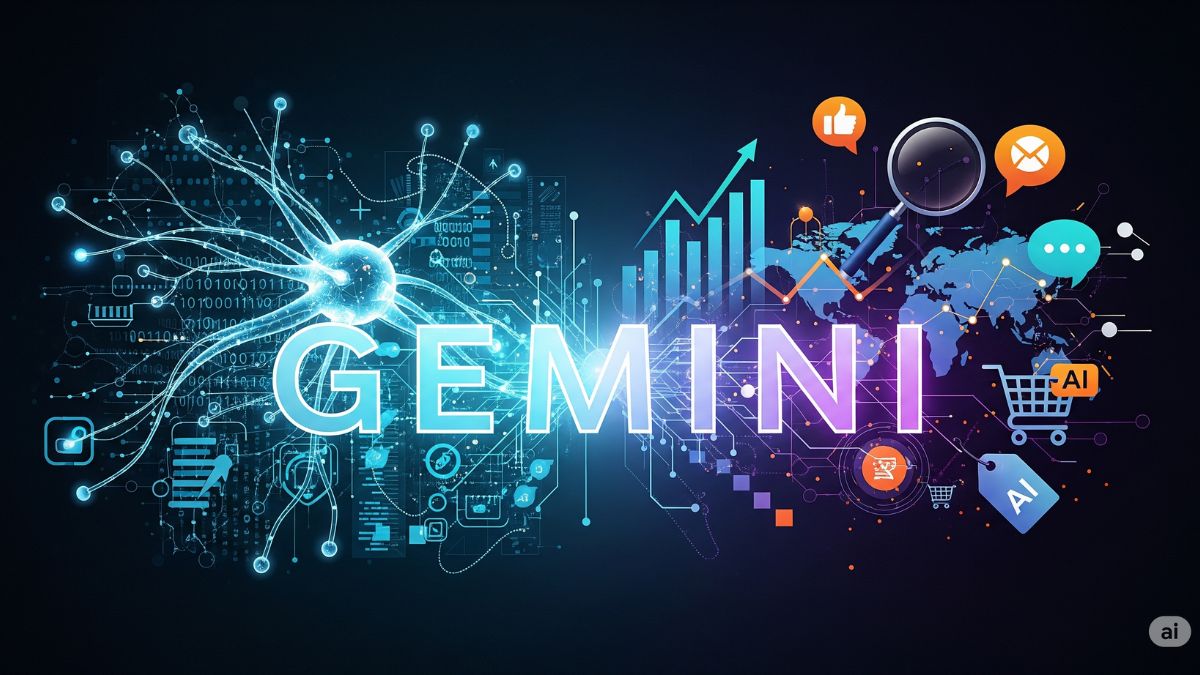
What is a prompt? How to make an effective prompt for artificial intelligence? Google has a little-known guide with practical advice on the subject. The document, called the “Gemini Prompt Guide for Creatives and Strategists”, is a practical manual designed for marketers and creatives who want to make the most of artificial intelligence in their workflows. Far from being a technical manual, this document is presented as a cultural and creative toolkit, aimed at bringing marketing professionals closer to a new type of collaboration between human and AI.
ALSO READ. What are the 4S of marketing according to Google and why should CMOs know them?
The premise of this Google guide is clear: Gemini does not replace human creativity, it amplifies it. As the guide itself explains: “AI won’t replace your creativity, but it can enhance it if you learn how to prompt effectively”.
What role does Gemini play in marketing according to Google?
Gemini, Google’s artificial intelligence model, has been designed to be multimodal: it can work with text, images, video, and audio. This opens up a huge field of applications for brands.
The guide emphasizes that Gemini’s role should be understood as that of a strategic collaborator that helps synthesize information, generate ideas, and adapt campaigns into multiple formats. According to the document, “The art of the prompt is about clarity, context, and iteration”, which means that the quality of the responses depends directly on how users structure their instructions.
In practice, for a marketer this means being able to analyze consumer trends, identify audiences, summarize market studies, and even test the reaction of different consumer profiles to a campaign.
ALSO READ. Google AI Mode reaches 180 countries: what does it mean for SEO?
What are the key elements of a good prompt in Gemini?
Google proposes a clear framework to structure effective prompts that any marketer can apply:
- Persona – Assign a role to the AI: “You are a senior strategist at a global agency.”
- Task – Clearly define the task: “Generate five campaign concepts for a young audience.”
- Context – Provide background data: “The brand seeks to differentiate itself in the sustainable fashion market.”
- Format – Indicate how the result should be presented: “Write the ideas in a table format with insight, idea, and call to action.”
In addition, the guide recommends following four basic principles: use natural language, be specific, maintain clarity and brevity, and iterate with follow-up questions.
How can marketers use Gemini in strategic research?
One of the most relevant sections of the document is dedicated to the strategic uses of Gemini in marketing. Here, AI becomes a tool to save time in research and transform data into insights:
- Research Analysis: summarize reports of hundreds of pages and extract key findings for a brand plan.
- Market Research: generate an overview of a market with size figures, projections, and competitors, even in tabular format to integrate into Google Sheets.
- Audience Research: identify potential consumer segments, explaining motivations and demographics.
- Comms Strategy: formulate real situations where a product solves an everyday problem, a valuable resource for brand storytelling.
- Strategic Frameworks: co-create strategic frameworks such as the classic Get/To/By, answering guided questions that help structure strategic thinking.
These use cases show how a strategist can rely on Gemini to accelerate research and devote more time to critical analysis, the part where human value remains irreplaceable.
What creative uses does Google’s prompt guide recommend?
In addition to strategy, the guide places special emphasis on the creative phase of marketing. Gemini can contribute at every stage of the development of an advertising campaign:
- Idea Generation: transform an insight into campaign concepts. For example, the document proposes using the perception that dog owners feel guilty about eating in front of their pets to create the campaign “Dinner’s Better Together.”
- Multichannel Iteration: a single idea can become a spot for YouTube Shorts, a billboard, or podcast content, simply by adjusting the prompt.
- Talent Selection: Gemini can suggest influencers suitable for the brand, based on audience data.
- Simulated Feedback: AI can generate virtual panels of different profiles – such as a “Dog Mom,” a “Cynic,” or an “Optimist” – to test a campaign.
- Copywriting: the guide includes examples of prompts to generate slogans, OOH headlines, A/B test variations, and even humorous versions in the style of “Seinfeld” or “Chuck Norris joke.”
- Pitching: Gemini can also help prepare elevator pitches and anticipate difficult questions stakeholders might ask in a presentation.
How to build a prompt culture within marketing teams?
One of the most innovative sections of the document addresses the need to build an AI culture within organizations. Google recommends that agencies and marketing teams implement practices that normalize the use of Gemini in day-to-day work.
Some of the proposals include:
- Review past projects with the question: how would this work have improved with Gemini?
- Create a shared Prompt Library so that all team members can reuse the best examples.
- Dedicate five minutes in each weekly meeting to share inspiring AI use cases.
- Develop custom Gems, adapted versions of Gemini with preconfigured prompts for recurring tasks, such as “Report Analyzer” or “Brainstorming Assistant.”
- Explore multimodality, taking advantage of the fact that Gemini can analyze images, videos, and complex documents in addition to text.
What are the risks and opportunities of this prompt guide?
Although Google’s proposal is innovative, it raises challenges that marketers must consider:
- Excessive Dependence: there is a risk of delegating too much to AI and losing critical perspective. It is important not to lose sight of the fact that any artificial intelligence is only a tool that simplifies or speeds up processes.
- Standardization of ideas: if all teams use similar prompts, campaigns could become homogeneous.
- Ethics and transparency: it is necessary to disclose when content was generated with AI and ensure that biases are not reproduced.
On the other hand, the opportunities are clear:
- Greater efficiency in research.
- Increase in ideation speed.
- Ability to explore more creative variations.
- Improved interdisciplinary collaboration between planners, creatives, and brands.









